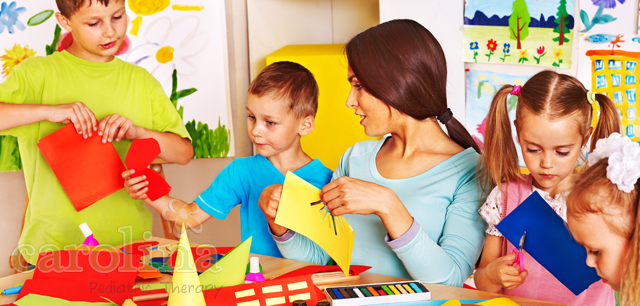How Teachers Can Make Their Classes More Inclusive
Inclusion in the classroom refers to when children with special needs are mainstreamed into a regular classroom. It can be very stressful, over stimulating, and sometimes scary for children with special needs. It is important for teachers of inclusion classrooms to help maximize success, by facilitating the process and making it beneficial for all her students. A few ways she can utilize the process of inclusion are:
- By creating a classroom community,
- Focusing on her students strengths,
- Utilizing peer teaching and helping create friendships.
Creating A Classroom Community
Creating a sense of community for your classroom should start on the first day of school, and be enforced everyday to help your class function as a whole. Start off by playing “icebreaker” games or activities that help you and your students learn about each other. Make every child feel like he is welcome, special, and is an important part of the classroom environment. Assigning jobs or duties, that are beneficial to the classroom moving forward as a whole, are a great way to encourage working together as an unit.
Capitalizing On Student Strengths
Capitalize on your students strengths and likes when creating the environment for your classroom. Each student has a skill or talent that you can recognize and focus on by providing opportunities during the school day to utilize it. A lot of children with special needs have sensory issues. These differences can be used as a strength in developing classroom cooperation. For example, having a water/sand/rice table, or a finger painting station, are great sensory activities that are also well liked by most young children. This builds an opportunity for relationship building over a shared, fun activity. Students with special needs also have sensory aversions, which may impact the child”s ability to navigate his environment successfully on his own. You can create a “safe corner” in your classroom. This can be a separate, quiet area of your classroom that is specifically designed for your students who need a little quiet and/or alone time.
Peer Teaching And Creating Friendships
In today’s education system there is the stress on academics and “testing well”. As a result, sometimes social skills and friendships can be pushed aside, however both are equally important skills to have, and are beneficial to the overall success of your students. Students with special needs often have difficulty socially, and may need help developing social skills and creating friendships. Providing your students with opportunities throughout the day to create and maintain relationships with their fellow students, while learning, is an important goal to facilitate. There are many natural ways to do this within your classroom: creative centers, games, and cooperative activities during less structured classes such as P.E. or cafeteria time.Centers and group projects can also be used to encourage positive social skills and create new friendships, while working together and learning. Create peer teaching and peer groups that allow your students to communicate and problem solve as a group. Use your knowledge of your students strengths to set up peer teaching pairs. Help them become inspired to share their knowledge and experiences with each other. Sources:
eHow.com | GritProgram.com (PDF) | FriendshipCircle.org | TeachHub.com
Inclusion For Teachers ~ Shandy Marso, Contributor Carolina Pediatric Therapy © August 2014
Want to know how a Therapist can Help?
Call (828) 398 0043 or click on the schedule button.



